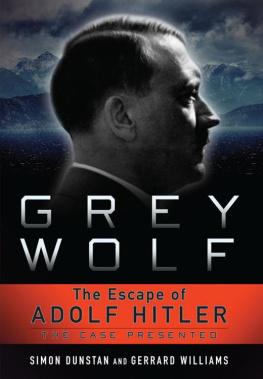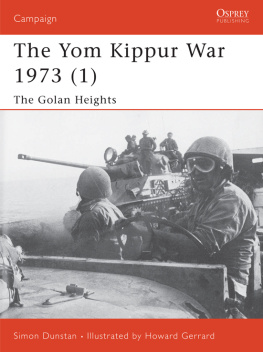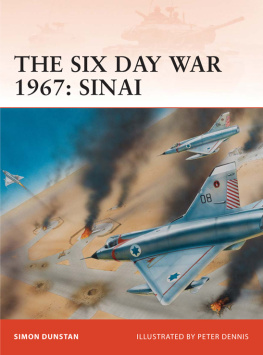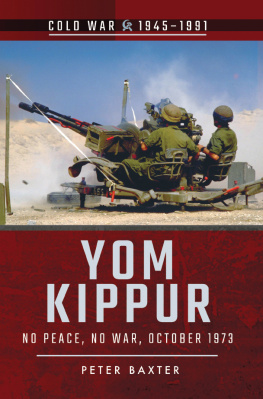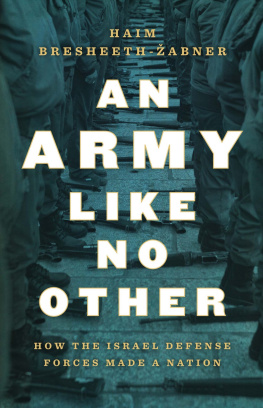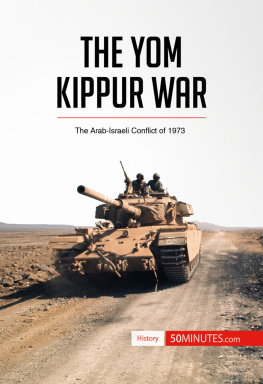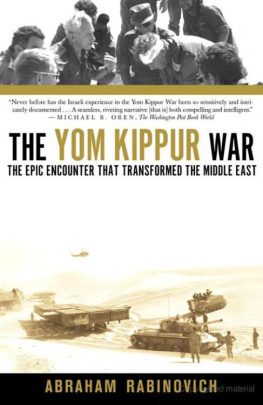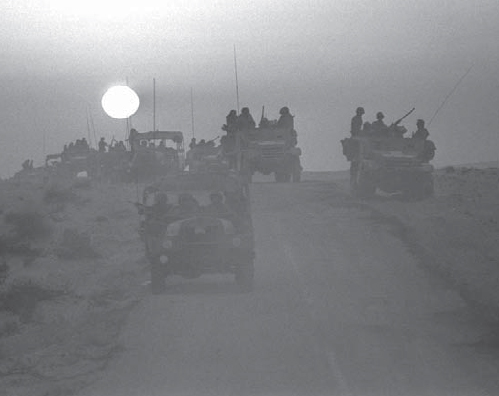FORTRESS 79
ISRAELI FORTIFICATIONS
of the October War 1973
| SIMON DUNSTAN | ILLUSTRATED BY STEVE NOON
Series editors Marcus Cowper and Nikolai Bogdanovic |
CONTENTS
ISRAELI FORTIFICATIONS OF THE OCTOBER WAR 1973
If you entrench yourself behind strong fortifications, you compel the enemy to seek a solution elsewhere.
Karl von Clausewitz, On War
ONLY LET THERE BE PEACE
The Six Day War of June 1967 was possibly the most stunning victory in the annals of modern military history. Only a week previously, many Israelis believed their country to be on the eve of destruction on a par with the Holocaust. Surrounded by a hostile Arab world, Israel faced invasion from the armies of four separate nations. Yet within six hours, the Israeli Air Force (IAF) destroyed the military and political will of these implacable enemies. Within six days, the Israel Defense Forces (IDF) comprehensively destroyed their armed forces and changed the political complexion of the Middle East to this day. Before the war there was a rueful Israeli saying that went: Israel is like a sausage easy to carve up. In an overwhelming triumph of arms, the Israelis increased their landmass by a factor of four and achieved militarily defensible borders for the first time since the creation of the state in 1948. In the euphoria of victory, Israeli confidence knew no bounds and a new saying was heard in the cafs of Tel Aviv and the newly captured city of Jerusalem: Damascus is just an hour away, Cairo perhaps two.
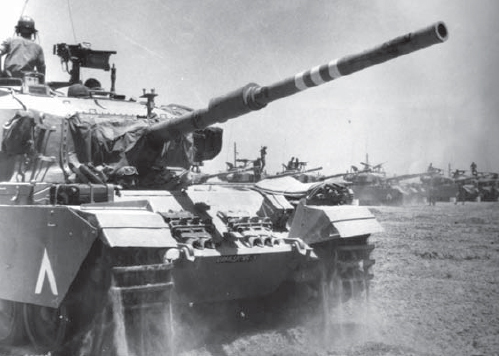
The combination of Israeli air power and armoured might was the key to victory in the Six Day War. In the words of the war correspondent Randolph S. Churchill: a feat of arms unparalleled in all modern history. Neither the Arabs nor the Israelis were able to find any political accommodation following the conflict leading to renewed hostilities and the creation of extensive field fortifications along Israels vastly expanded borders.

Victory in the Six Day War brought the IDF to the banks of the Suez Canal where troops dug in, such as this machine-gun team with their .30-cal. M1919 Browning as a Sikorsky S-58 helicopter comes in to land. Such basic positions provided scant protection against Egyptian artillery fire and as the casualties rose the Sikorsky S-58 helicopters were widely used in the medical evacuation role. First acquired in February 1958, the Sikorsky S-58 helicopter equipped IAF No. 124 Squadron Rolling Sword and 28 were in service at the outbreak of the Six Day War when they acted in the search and rescue (SAR) role for downed pilots, air assault of Israeli paratroopers, tactical airlift and for aeromedical evacuation missions. By 1969, the S-58 had been superseded by the Bell 205 in the SAR role.
Vital terrain was gained on the West Bank of the Jordan River, the Golan Heights and the Sinai Peninsula. Yet these greatly extended borders now had to be defended against an Arab world that would not countenance any form of political or territorial compromise except an immediate return to the borders ante-bellum. The prospect of lasting peace seemed as elusive as ever. The defence of the occupied territories was now a pressing reality. The strategic depth afforded by the Sinai Peninsula demanded its total retention but with the minimum of forces given Israels chronic shortage of manpower as compared to her Arab neighbours. Similarly the Golan Heights was vital ground to be held at all costs. The dilemma was how to achieve these aims with the least expenditure of men and resources. Fortunately, the rugged terrain on both the Golan Plateau and the Sinai Peninsula favoured the defenders, since both were predominately mountainous with few roads to aid any attacker. The only feasible avenue of attack was across the Suez Canal, yet the waterway itself presented a formidable obstacle that would have to be surmounted first before any assault could be successful. The Israelis had no intention of allowing this to happen. The outcome was the War of Attrition. With the resumption of hostilities in July 1967, the fortification of the IDF positions along the Suez Canal became necessary to reduce casualties. This led to the construction of the fabled Bar Lev Line. It was just one element in an increasingly sophisticated defence strategy that had all the hallmarks of a complex three-dimensional chess game, albeit a contest that frequently resulted in the deaths of soldiers and airmen in the ever-shifting sands of the Sinai Desert and of sailors in the waters that defined the Sinai Peninsula. To extend the chess analogy further, the static Bar Lev Line represented the line of pawns on the board of battle. Behind them, the artillery acted as rooks capable of rapid linear movement along the front and providing heavy firepower at every point of contact. The Israeli Armored Corps (IAC) provided the bishops, capable of rapid movement and shock action at any place of enemy incursion or in support of the pawns on the Bar Lev Line. With their ability to attack from unexpected directions, the Special Forces in their helicopters or frogmens Zodiacs were the knights, striking swiftly and without warning deep inside enemy territory. The queen on this particular battlefield was undoubtedly the IAF. Highly trained and motivated, the IAF was Israels most potent strike force and the guardian of the skies over Israel. At the outset of the War of Attrition that was fought from July 1967 until August 1970, the IAF was employed for combat air defence and tactical close air support against an increasingly sophisticated Egyptian missile air defence system. In a testament to its professionalism, the IAF made the complex transition from a French inventory of aircraft to an American one during a conflict, with the newfound capacity to undertake strategic bombing deep in the hinterland of Egypt. In a bitter, protracted war, both sides fought to the point of exhaustion.
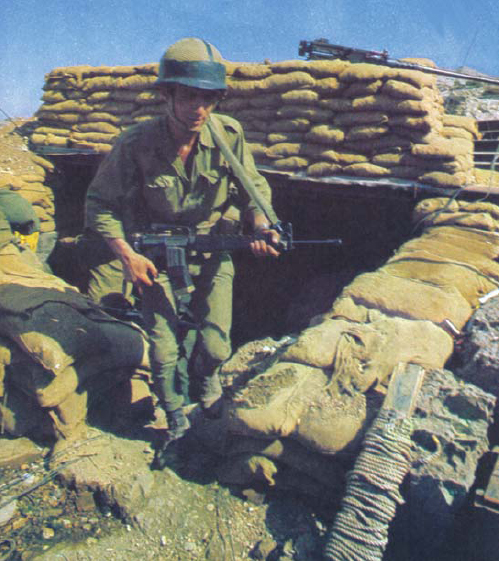
The first field fortifications along the Suez Canal were rudimentary and comprised little more than a sandbagged weapons pit and an underground bunker beneath. Both were vulnerable to a direct hit from artillery fire. Of particular interest, this soldier has an M16 rifle suggesting that he is a paratrooper since this weapon was a rare commodity in the IDF in the late 1960s. It was policy to replace reservist troops stationed on the Bar Lev Line with seasoned regulars such as paratroopers during times of tension or impending conflict. However, this was not to be in October 1973.
Throughout the war the Bar Lev Line had proved its worth in reducing the casualty rate of Israeli front-line troops. Following the War of Attrition, it was repaired and strengthened. The sand rampart was heightened to 18m and was extended along the length of the waterway. Another line of fortifications and sand barriers was created further inland to protect artillery and infantry formations lying in support of the Bar Lev Line. The network of roads and supply depots was extended to allow them enhanced mobility across the harsh terrain. But as the weeks of ceasefire turned into months, the Bar Lev Line diminished in importance within the IDF high command as they were now fighting a new enemy of fedayeen inside the occupied territories and terrorists across Europe, exemplified by the Munich massacre at the Olympic Games of 1972. For three years all was quiet on the Egyptian front, during which time several fortifications were shut down along the Suez Canal and others were allowed to fall into a state of disrepair. With economic prosperity growing in Israel, complacency grew in the political and military establishment. On the holiest day in the Jewish religious calendar, the fortifications of the Bar Lev Line along the Suez Canal and the Purple Line on the Golan Heights were put to the ultimate test. On Yom Kippur, 6 October 1973, the armies of both Egypt and Syria attacked the state of Israel simultaneously.


